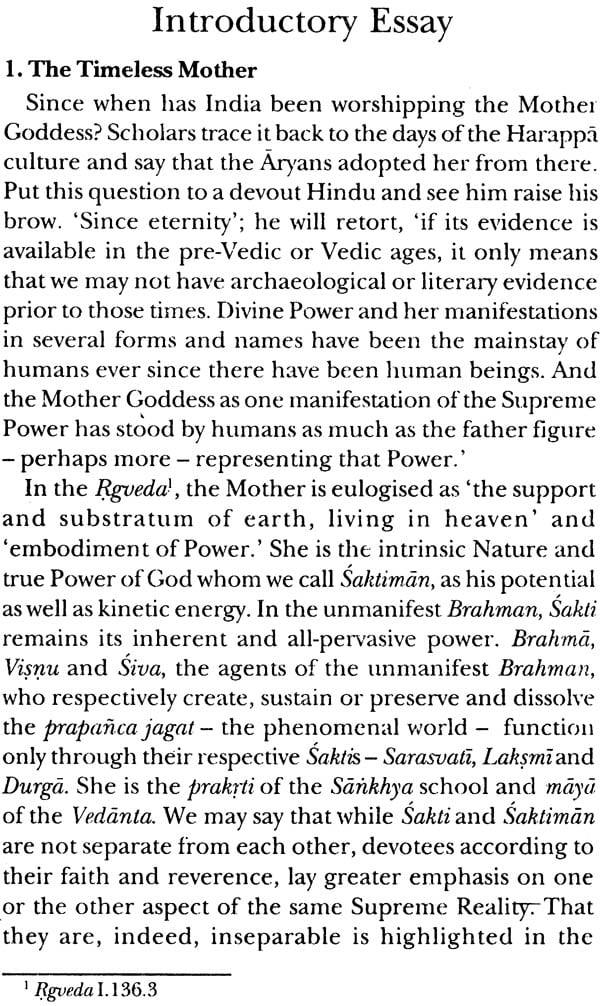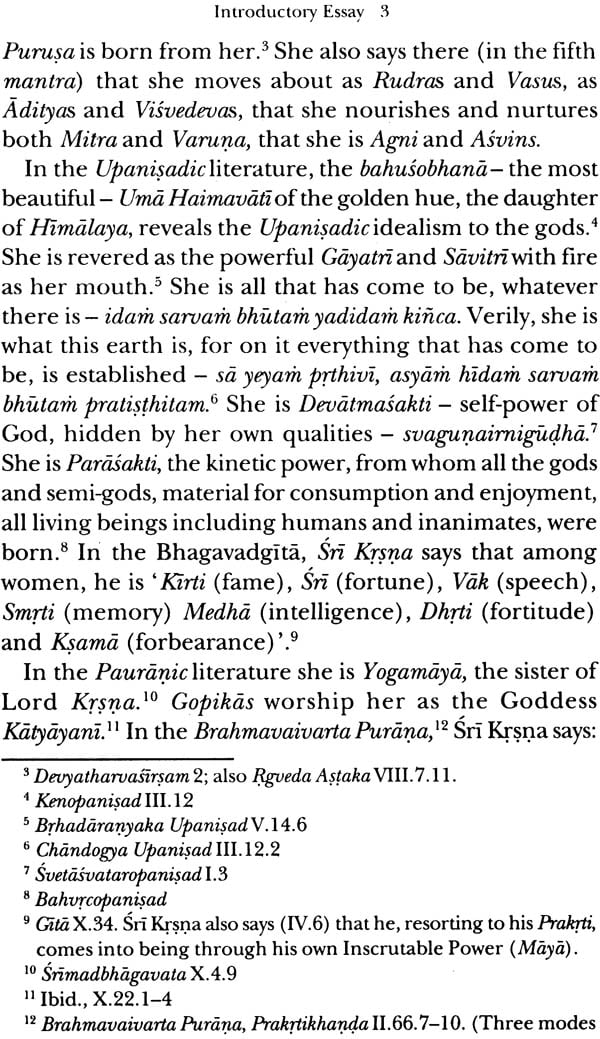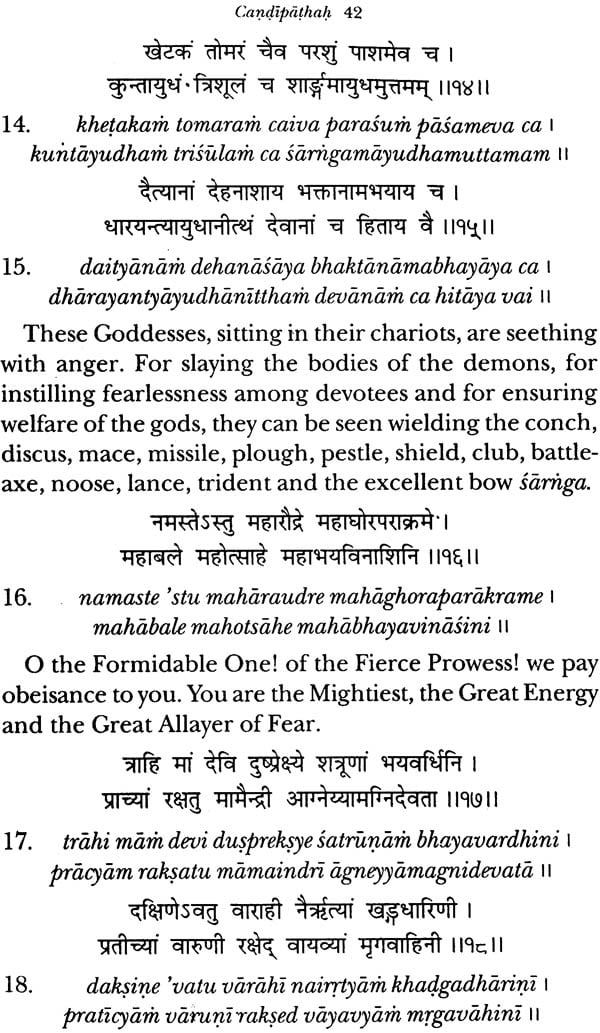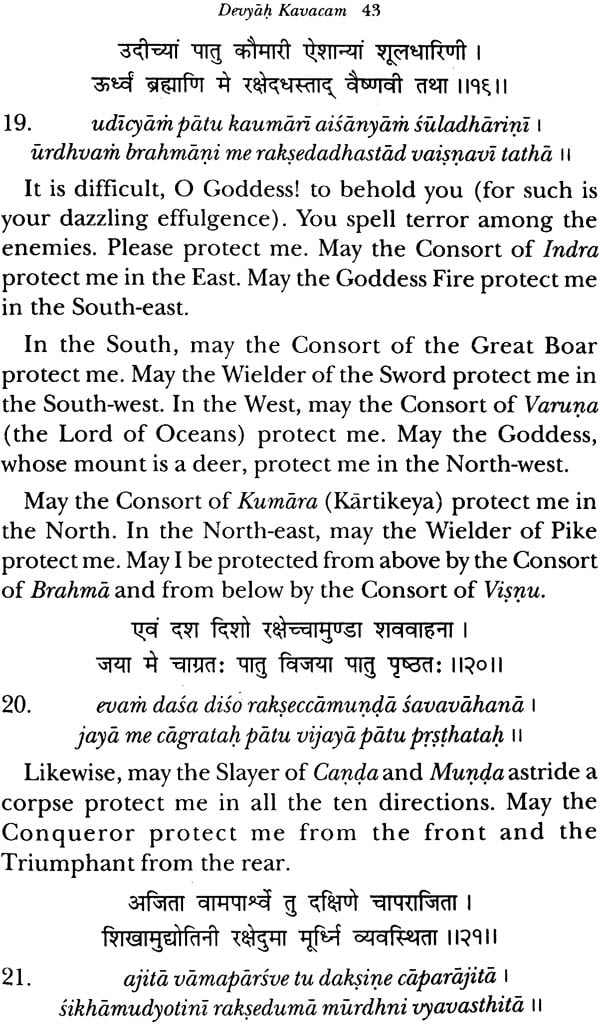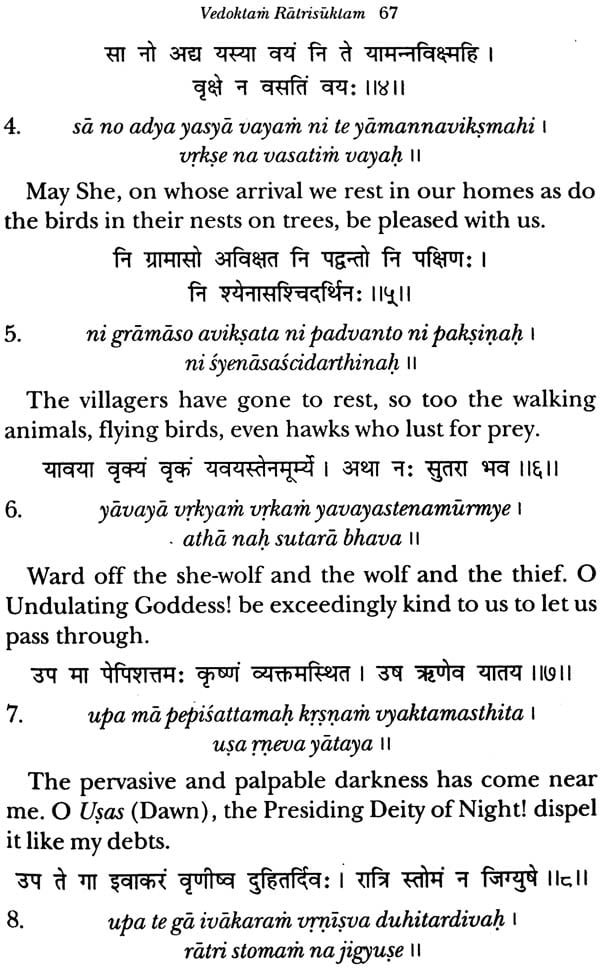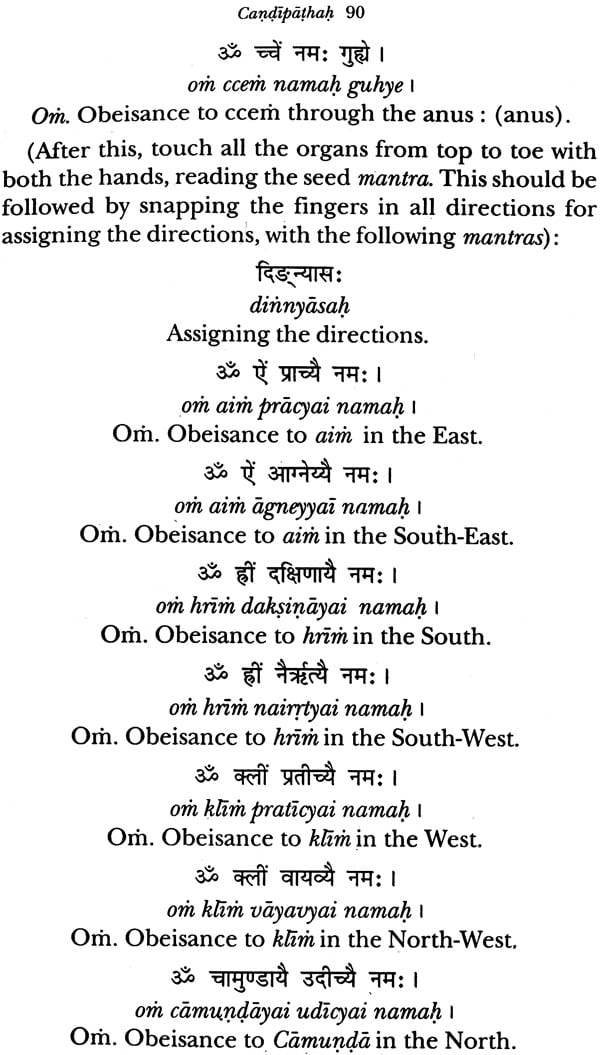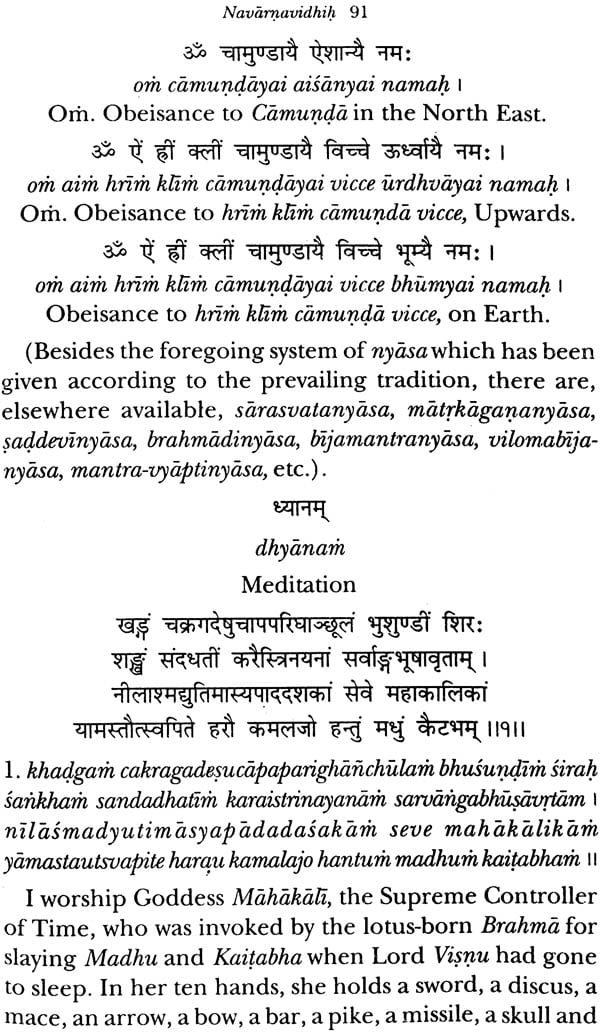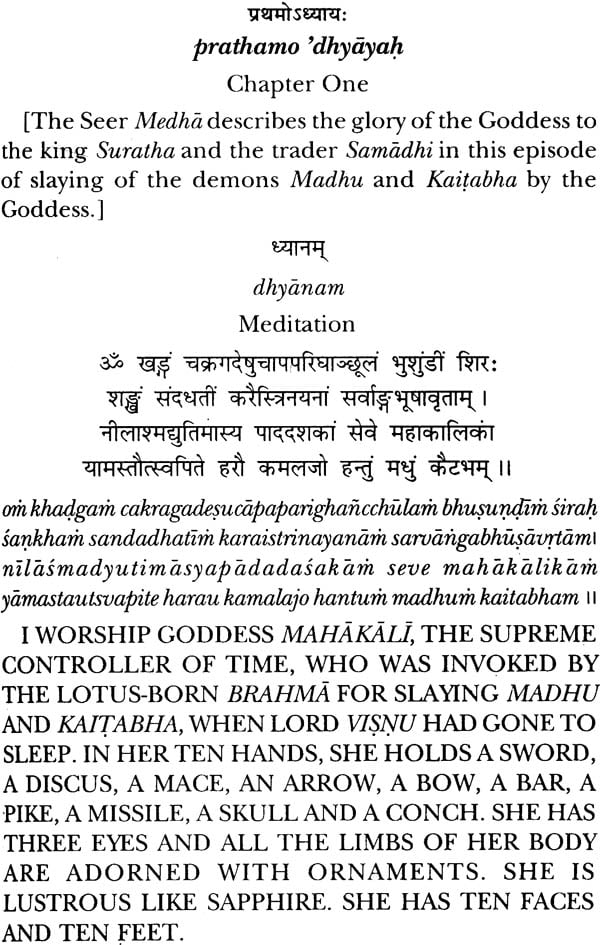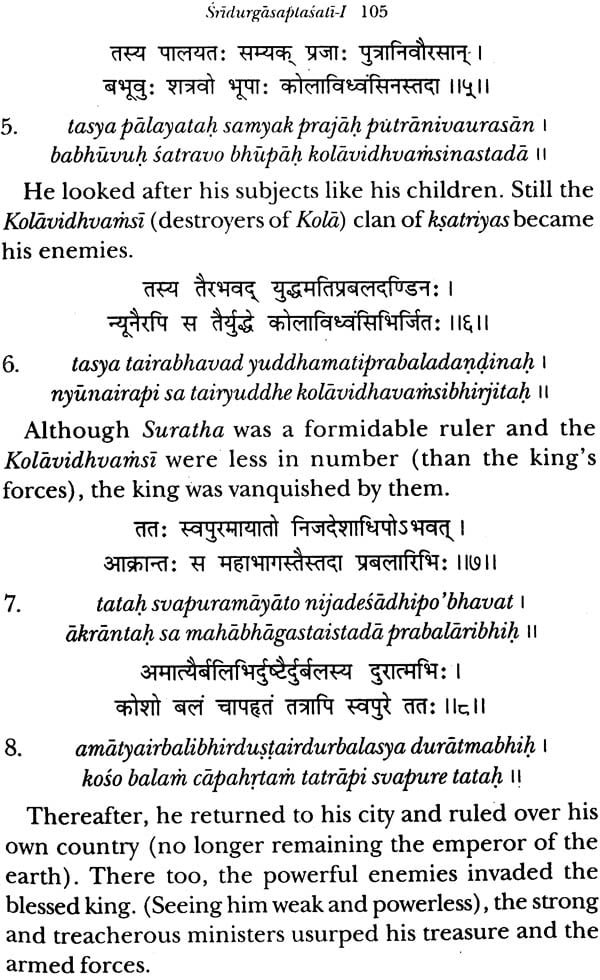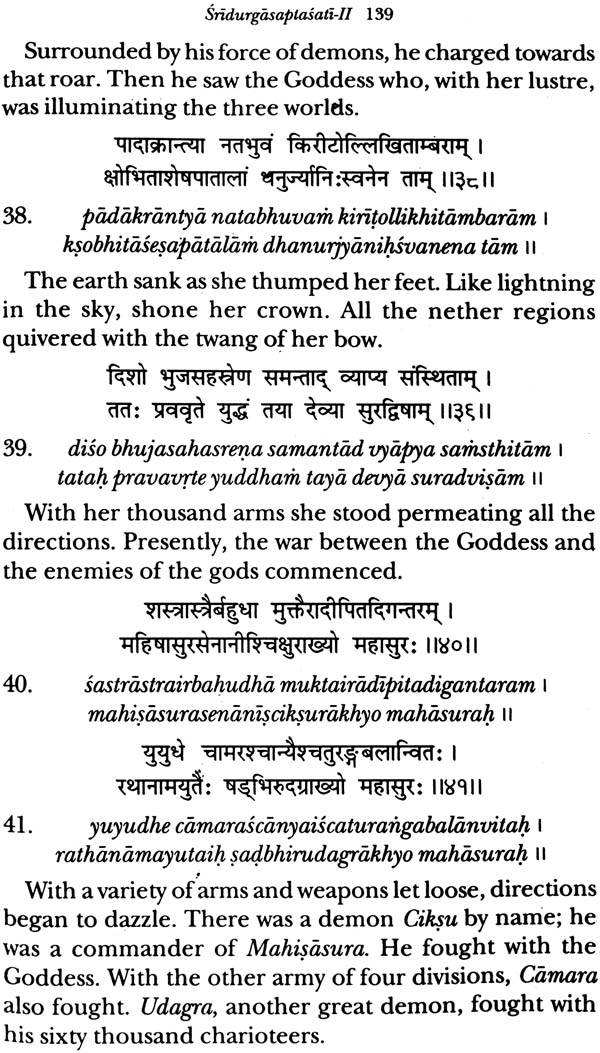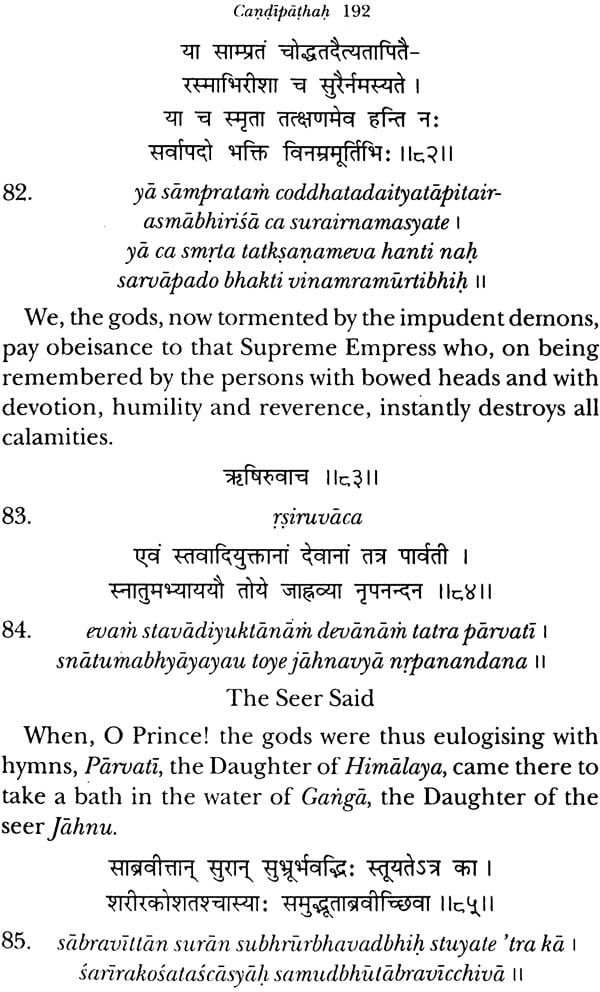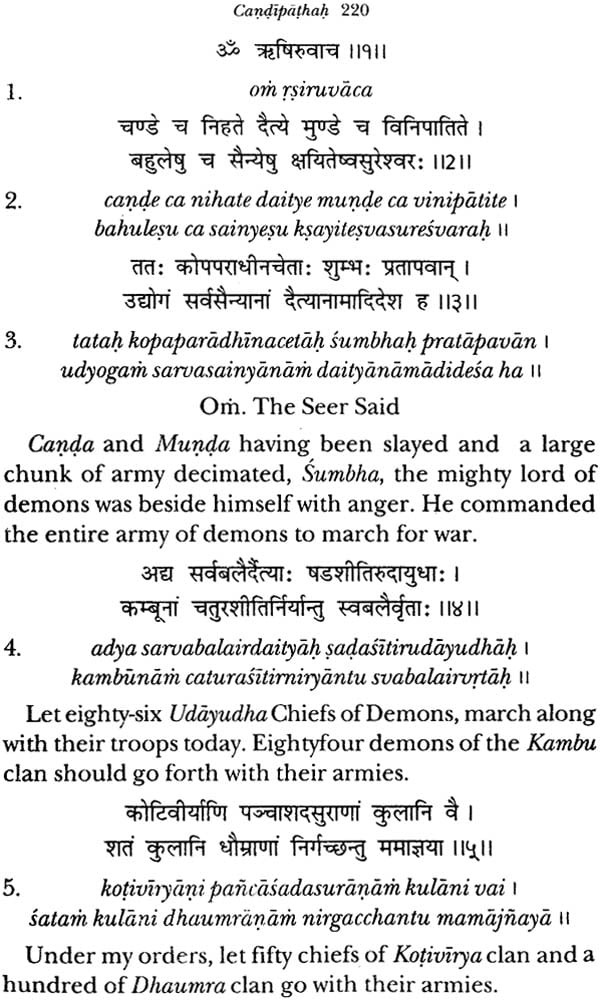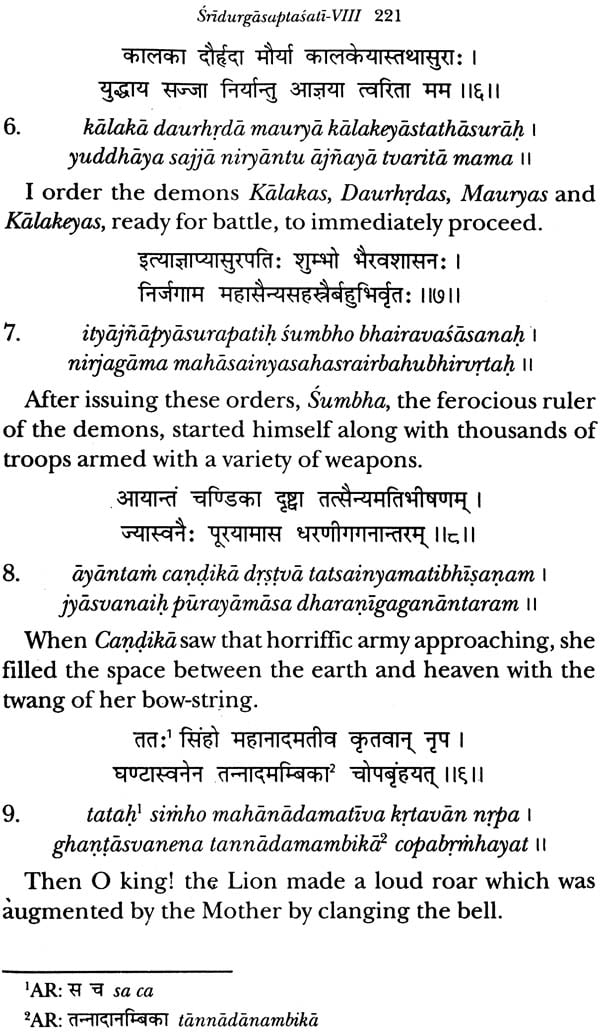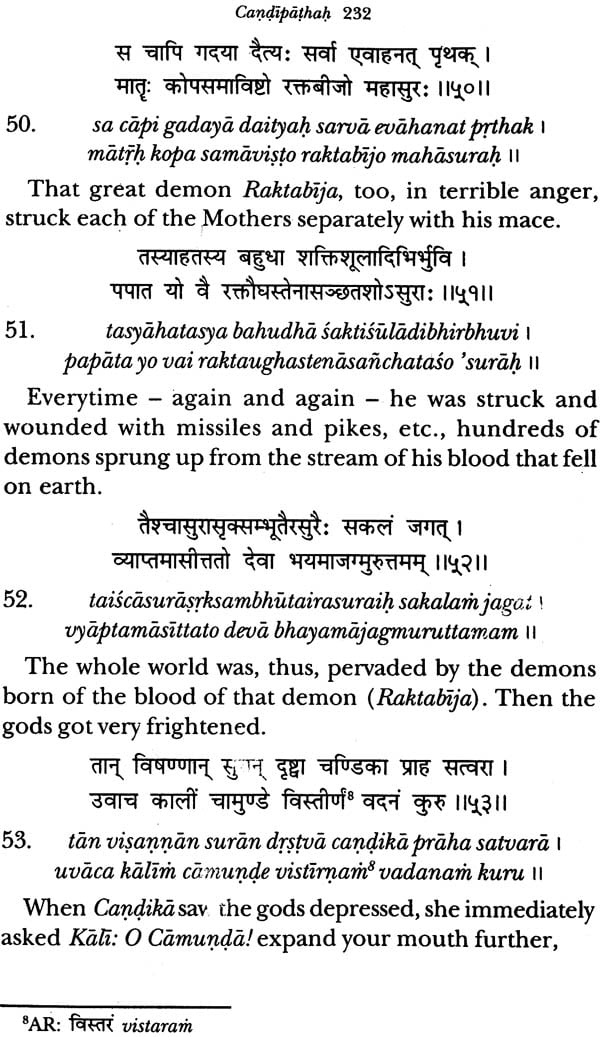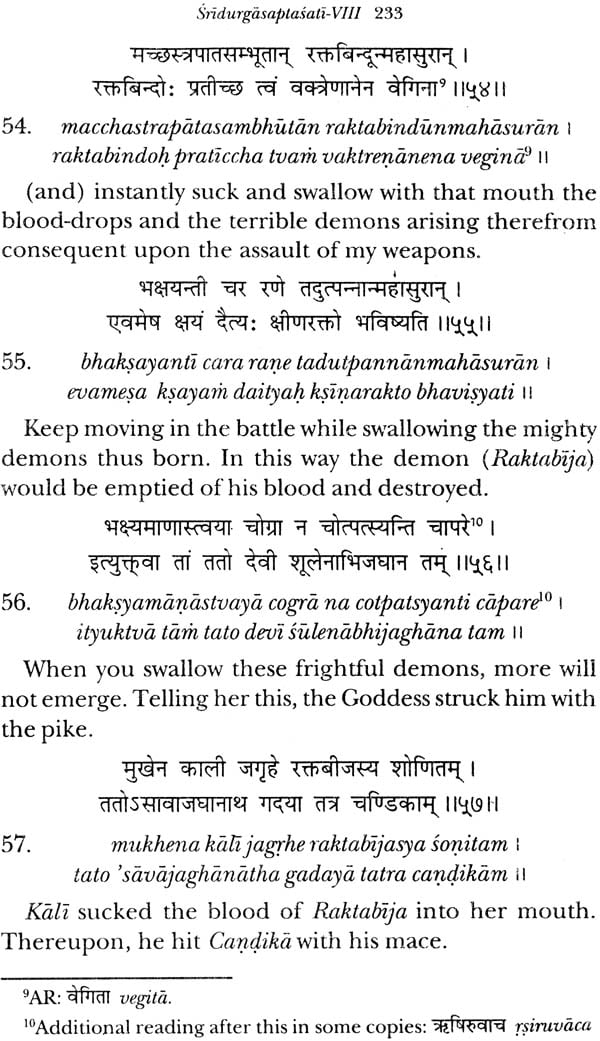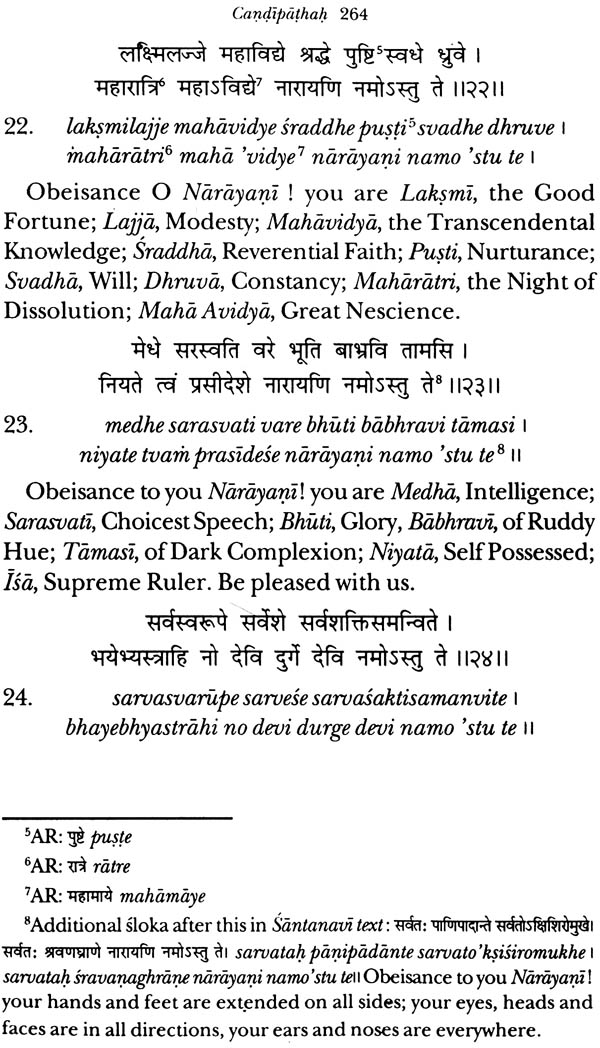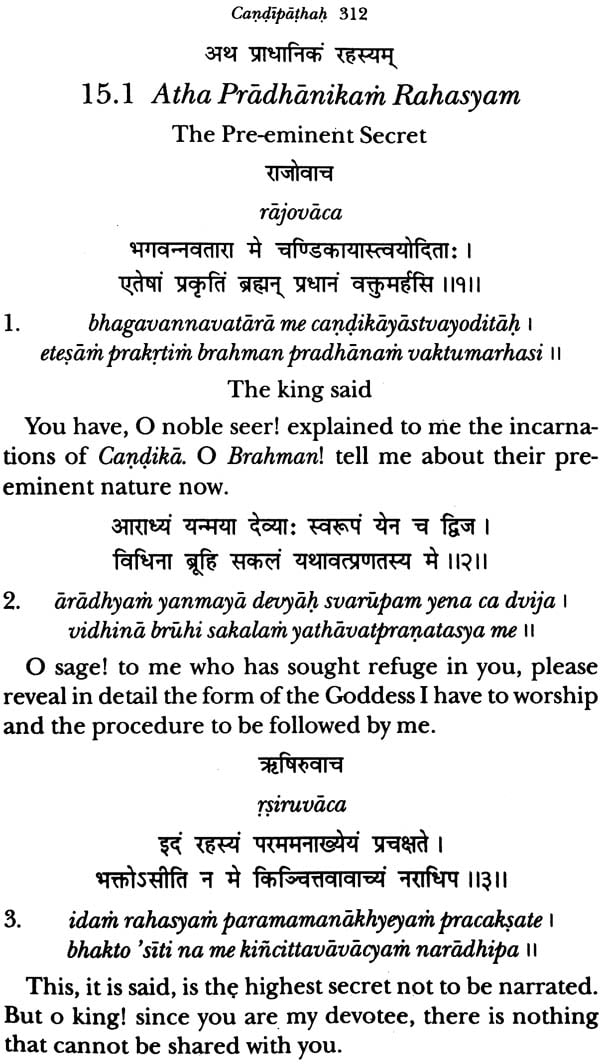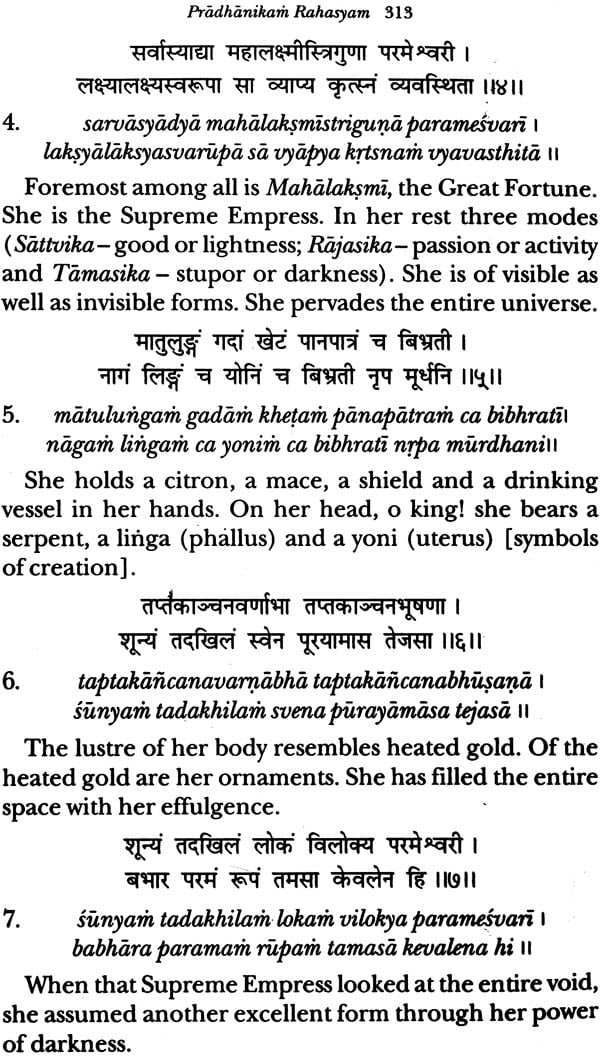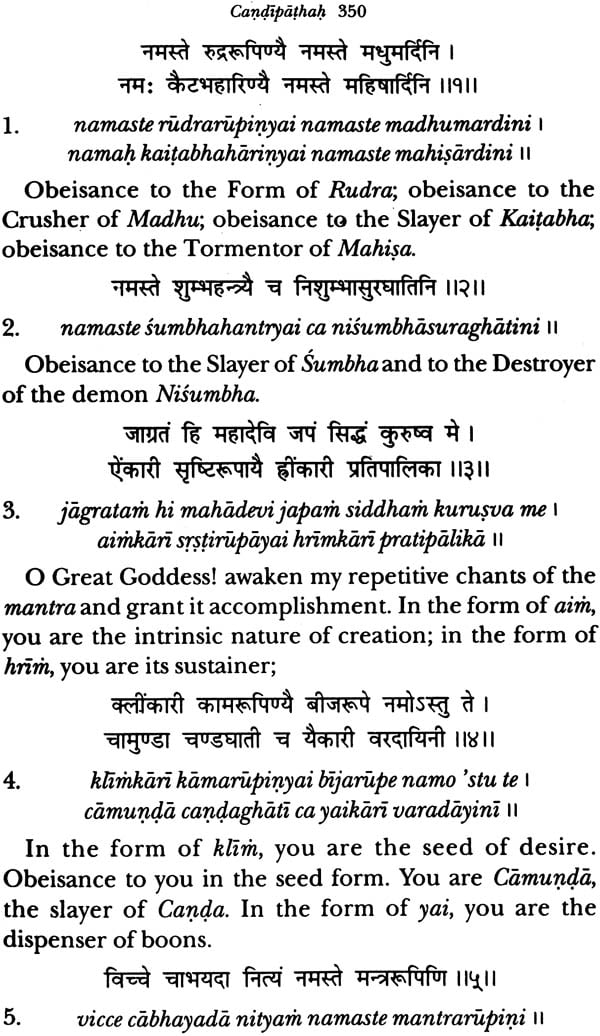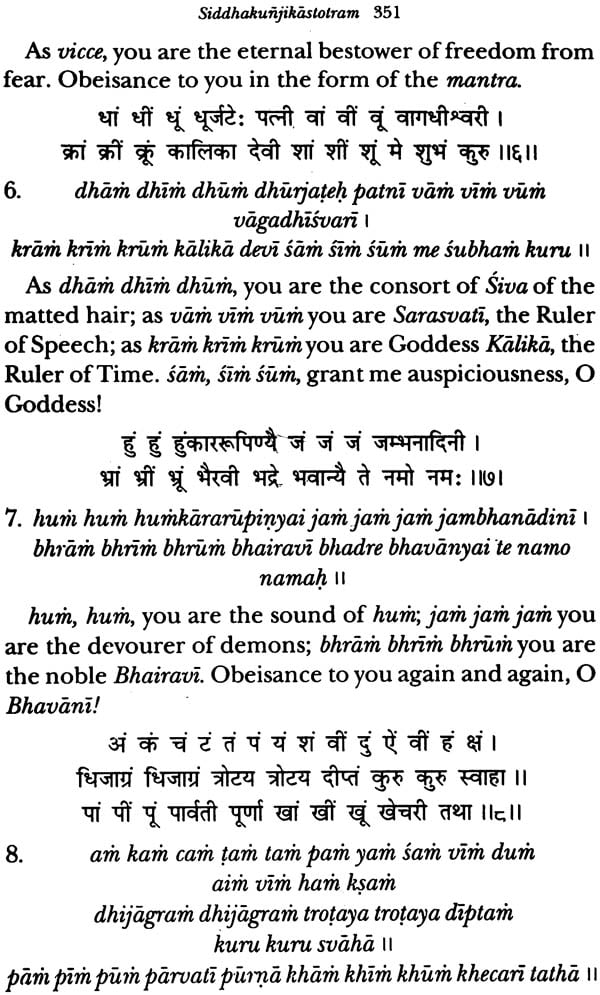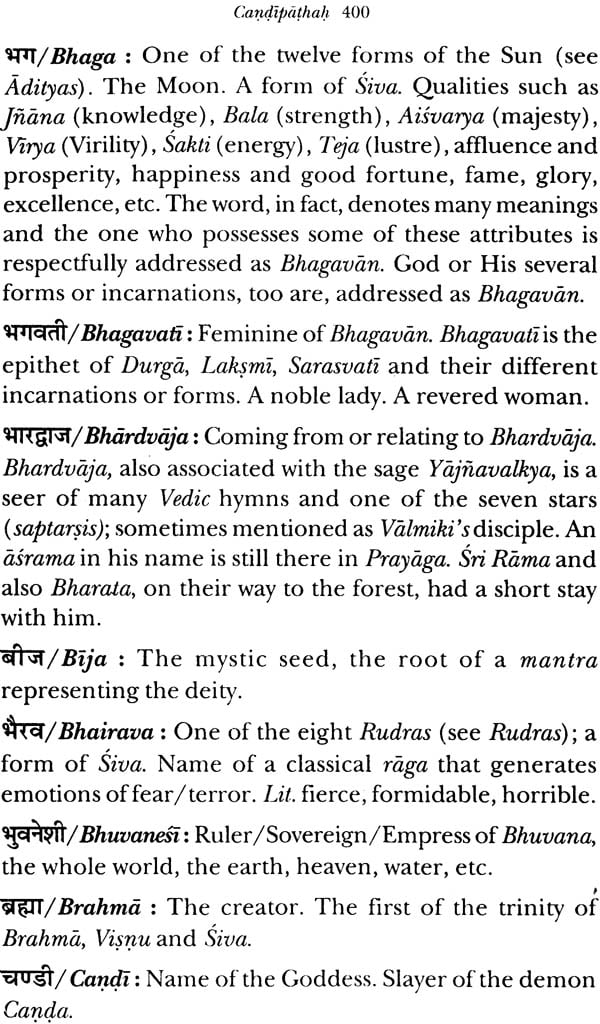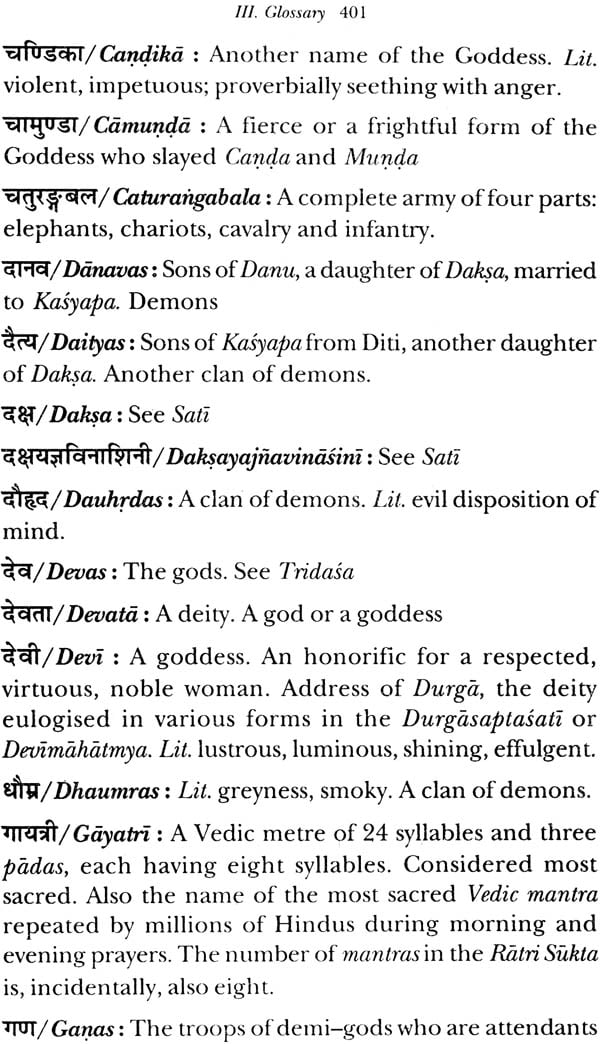
Candipathah (Incorporating Sridurgasaptasati and The Associate Hymns) (Sanskrit Text with Transliteration and English Translation)
Book Specification
| Item Code: | NAE883 |
| Author: | Allahabadia Pran Nath Pankaj and Bhavana Pankaj |
| Publisher: | MOTILAL BANARSIDASS PUBLISHERS PVT. LTD. |
| Language: | Sanskrit Text with Transliteration and English Translation |
| Edition: | 2018 |
| ISBN: | 9788120836198 |
| Pages: | 483 |
| Cover: | Paperback |
| Other Details | 8.5 inch x 5.5 inch |
| Weight | 430 gm |
Book Description
Candipatha, a part of the Markandeya Purana, which is one of the eighteen major Puranas, is its most important segment. Apart from Sridurgasaptasati, which forms the core of Candipatha, there are, preceding and succeeding it, several hymns of equal importance and, in the course of its ritual performance, all these hymns, as an integral totality, have to be recited as indicated in this book.
Candipatha celebrates the Feminine Power, Durga – Sakti – with her innumerable names, across in this sacred text, represents the quintessential woman. She is the source, substratum and ultimate Life Force. All the gods, men, birds, animal, even demons, all the elements, all moving and stationary objects are but Her fragmental particles. The universe is Her playground as well as Her play. At will, She creates, sustains and dissolves it. In Candipatha we see Her in Her full glory, majesty and splendor. As the Mother, She loves and protects Her children and as the invincible Kali, She decimates the forces of evil when they threaten righteousness, peace and Her devotees in the world.
The present publication includes, in addition to Sridurgasaptasati and the other associate hymns, a detailed Introductory Essay, which besides discussing the contents and importance of this work and its symbolism, provides a panoramic view of the Mother worship through the millennia. The four appendices include (i) Names, Adjectives, Incarnations, Epithets, etc., of the Mother Goddess (ii) Weapons mentioned in the text and their functions (iii) Glossary of important terms and (iv) the First-line index of Sanskrit verses, chapter-wise.
A.P.N. PANKAJ, an alumnus of D.A.V. College, Amritsar and St. Stephens College, Delhi, taught Sanskrit for some years in the former before joining State Bank of India where over a period of nearly thirty-five-years, he held a range of assignments and retired from its staff College at Hyderabad. These years gave him an opportunity to pursue his interest in the management and behavioural sciences. Since early days, he has been writing and giving lectures on the subjects related to the Indian culture, philosophy and religion and has deeply studied the Upanishads, Bhagavadgita, Pauranic literature and, especially, Sri Ramacaritamanasa of Gosvami Tulasidasa. He has translated more than half a dozen works from / into English / Hindi / Sanskrit. Besides writing a book on the asrama – system of the Hindu society and editing / writing nearly a dozen books on the medieval Hindi poets, he has also written and led discussions / symposia on the value – based system of education and the concept of development in Indian tradition.
BHAVANA PANKAJ, after studying English literature and Mass Communication at Punjab University, Chandigarh, spent some years as a journalist and television anchor. She currently pursues her love for the written word by writing, editing and translations on subjects ranging from Indian classical and dance to health care and education. An occasional film- maker, Bhavana has written books for children, on Vinoba Bhave and two books on a hospital in Jaipur. With equal felicity in Hindi and English, she also lends her voice as sutradhar on stage. Poetry is among her hobbies and she writes / translates poems in / from Hindi / English.
| (i) | Scheme of Transliteration | v |
| (ii) | Dedication | vii |
| (iii) | Invocation from the Vinaya Patrika | xiii |
| (iv) | A Personal Statement | xv |
| (v) | Important Instructions/ Suggestions | xxi |
| (vi) | Prakrti and Purusa | xxv |
| Introductory Essay | 1 | |
| 1 | Saptasloki Durga (Hymn of Seven Verses to Durga) | 27 |
| 2 | Sridurgastottarasatanamastotram (Hymn of One Hundred and Eight names of Sridurga) | 31 |
| 3 | Devyah Kavacam (Armour of the Goddess) | 38 |
| 4 | Argalastotram (Hymn of the Bolt) | 54 |
| 5 | Kilakam (Hymn of the Pin) | 61 |
| 6 | Vedoktam Ratrisuktam (Vedic Hymn of the Night) | 66 |
| 7 | Tantroktam Ratrisuktam (Hymn of the Night from Tantra) | 69 |
| 8 | Sridevyatharvasiram ( The Highest Meaning of the Goddess according to the Atharvaveda) | 72 |
| 9 | Navarnavidhih (The System of worship) | 85 |
| 10 | Saptasatinyasah (Assigning the Saptasati) | 95 |
| 11 | Sridurgasaptasati (Seven Hundred Verses to Durga) | 101 |
| I. | Prathama Carita (First Act) | 101 |
| II. | Madhyama Carita (Middle Act) | 127 |
| III. | Uttara (Uttama) Carita (Final or Foremost Act) | 179 |
| 12 | Upasamharah (Conclusion)(Repetition of Navarnavidhih) | 292 |
| 13 | Rgvedoktam Devisuktam (Rgvedic Hymn to the Goddess) | 299 |
| 14 | Tantroktam Devisuktam (Hymn to the Goddess from Tantra) | 303 |
| 15 | Srisaptasatirahasyatrayam (Trilogy of Secrets of the Saptasati) | 311 |
| 15.1 | Pradhanikam Rahasyam (The Pre-eminent Secret) | 312 |
| 15.2 | Vaikrtikam Rahasyam (The Modified Secret) | 321 |
| 15.3 | Murti Rahasyam (The secret of Personifications) | 332 |
| 16 | Durgadvatrimsannamamala (Rosary Of Thirty-two Names of Durga) | 340 |
| 17 | Devyaparadhaksamapanastotram (Hymn Seeking Pardon of the Goddess for Committing Offences) | 342 |
| 18 | Siddhakunjikastotram (Hymn of the Key to Accomplishment ) | 348 |
| 19 | Ksama Prarthana (Seeking Forgiveness) | 353 |
| 20 | Arati | 356 |
| 21 | And Finally, this Prayer…. | 361 |
| Appendices I to IV | 363 | |
| I. | Names,Adjectives,Epithets,Incarnations and Associates | |
| of the Mother Goddess Apperaing in the Text | 365 | |
| II. | Weapons Mentioned in the Saptasati | 393 |
| III. | Glossary | 398 |
| IV. | First-line Index of Sanskrit Verses | 413 |
